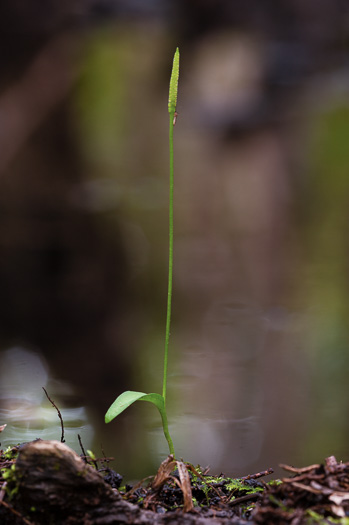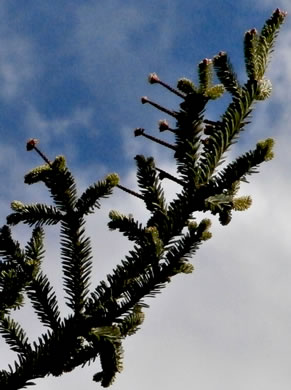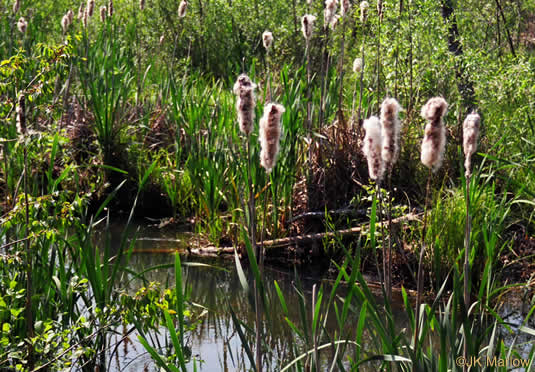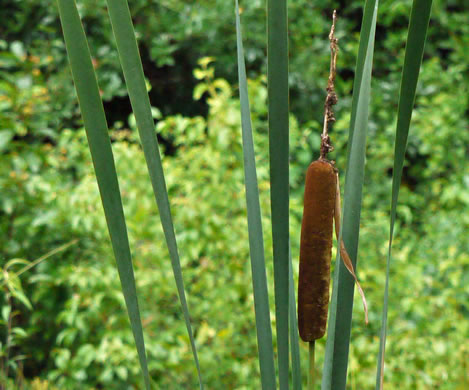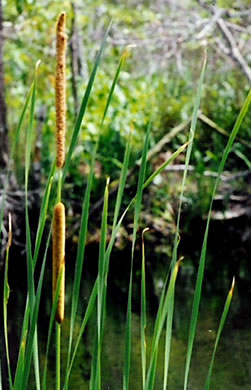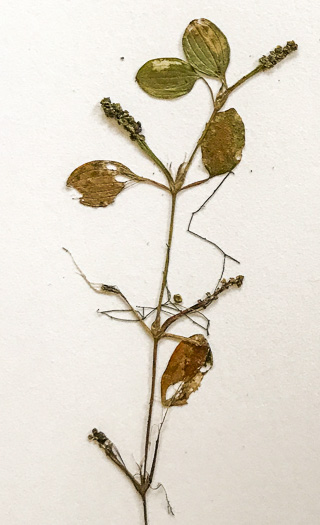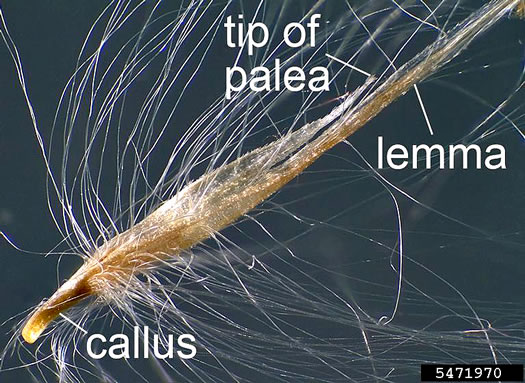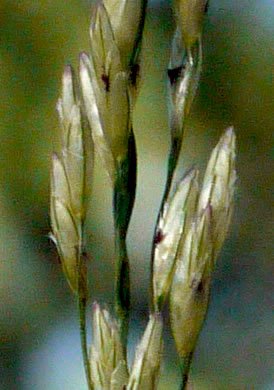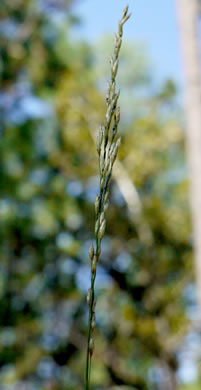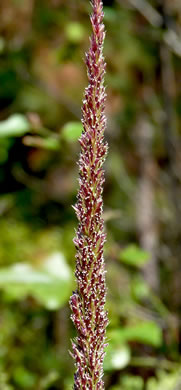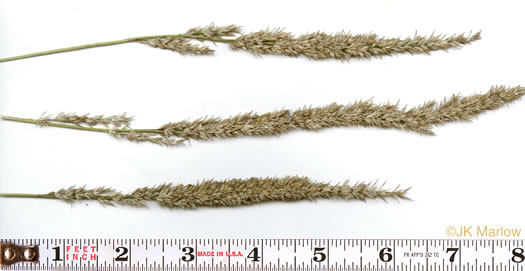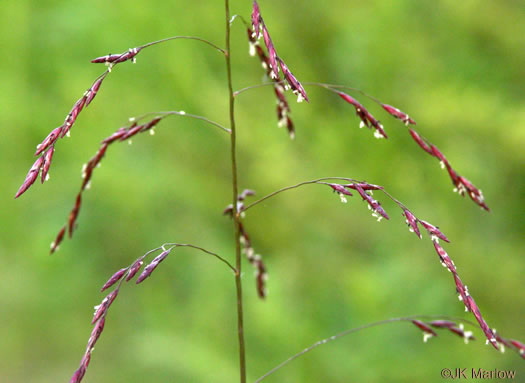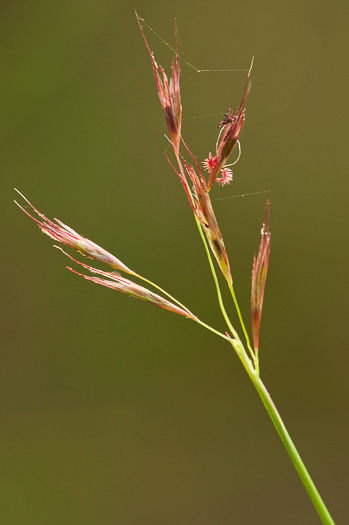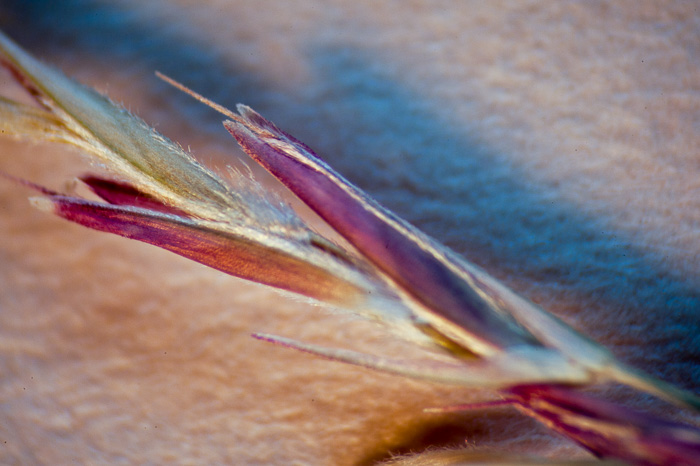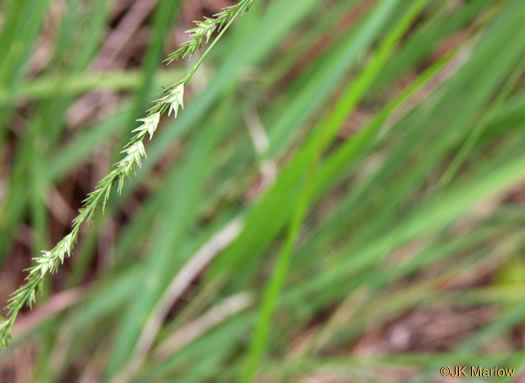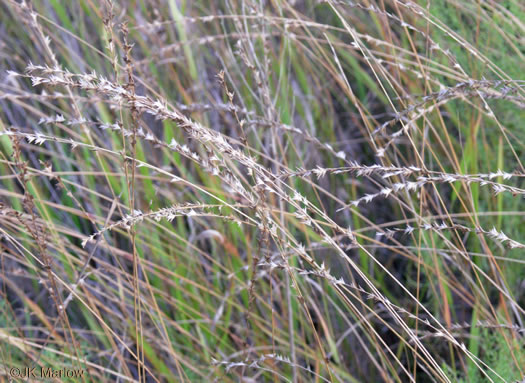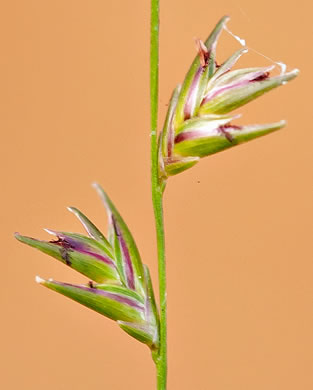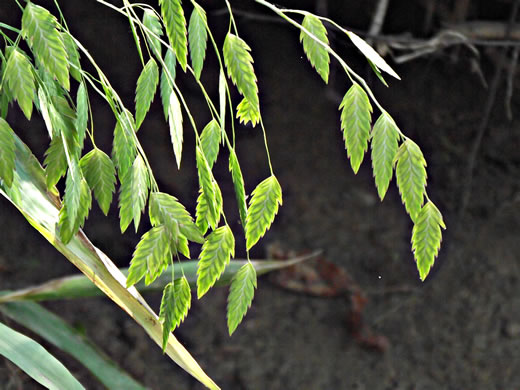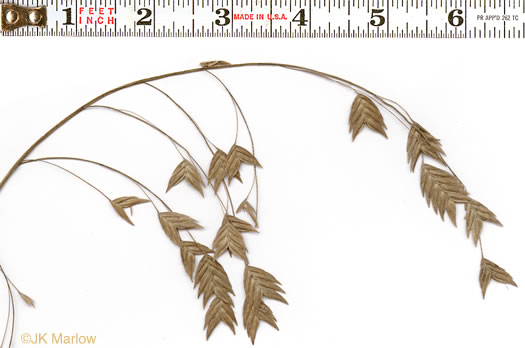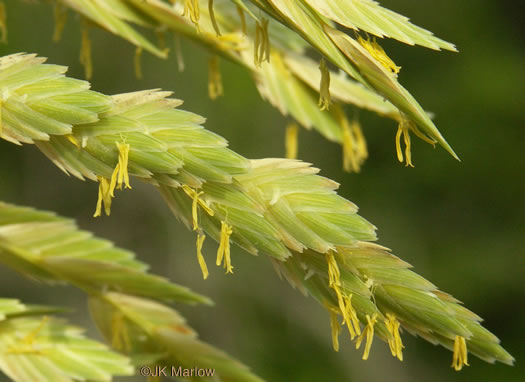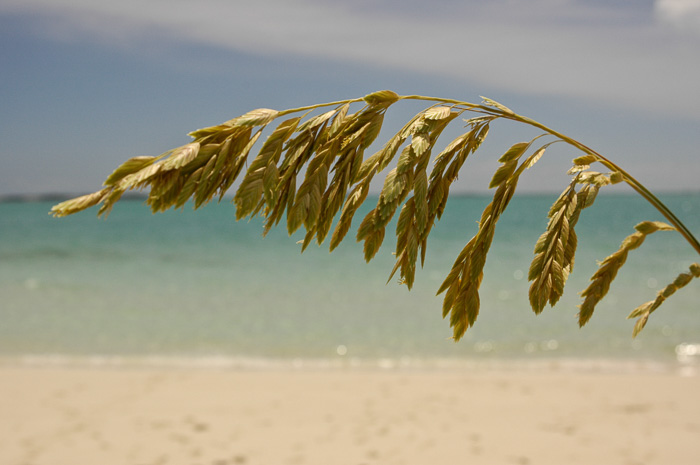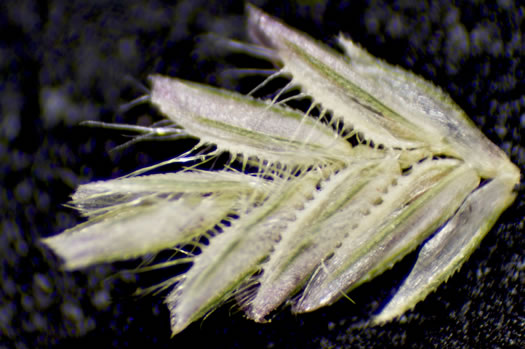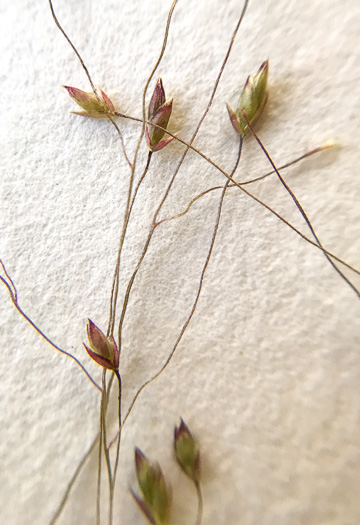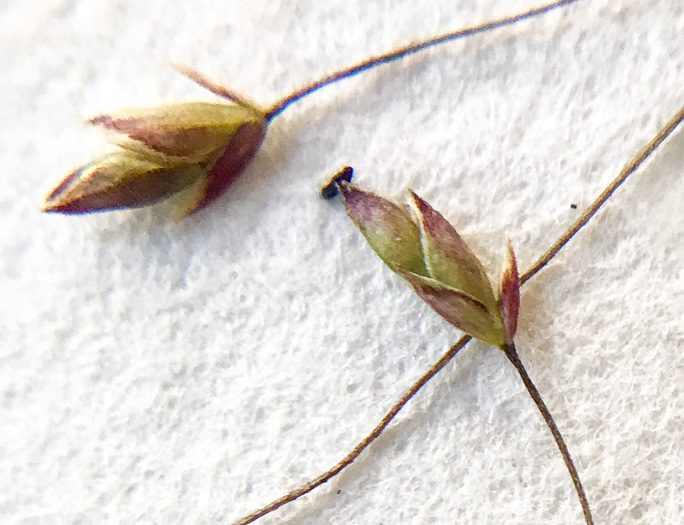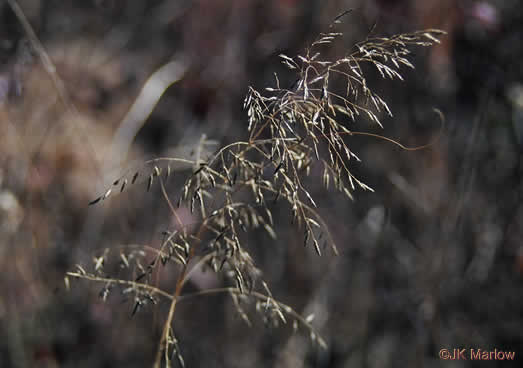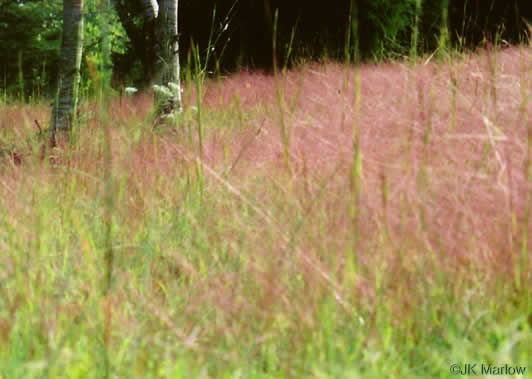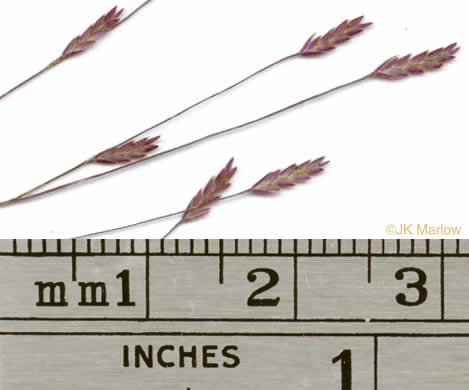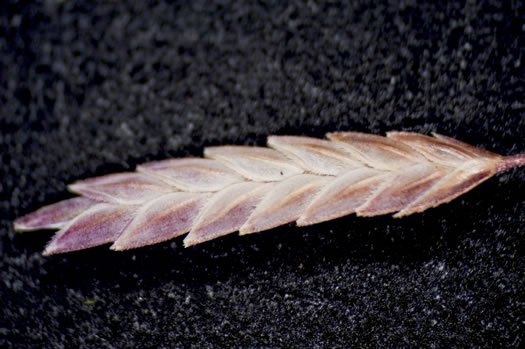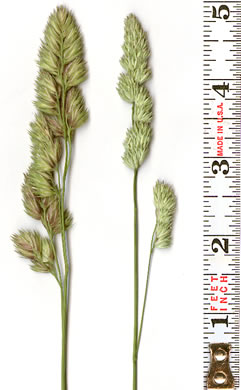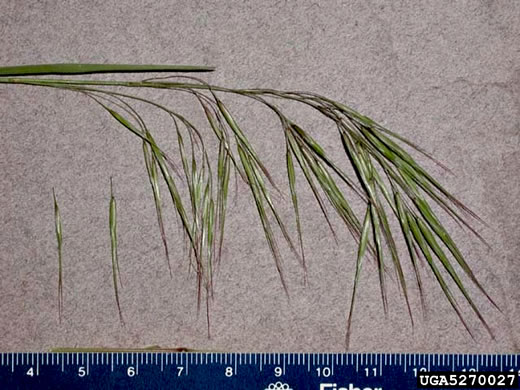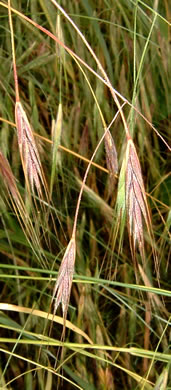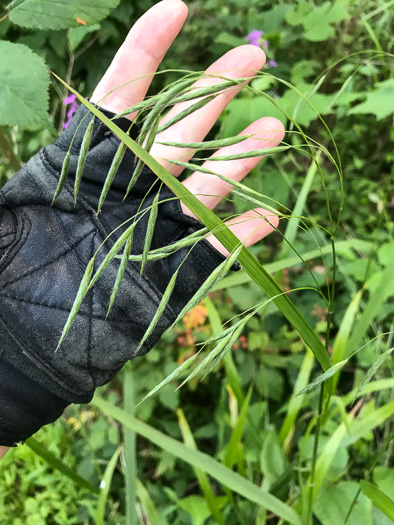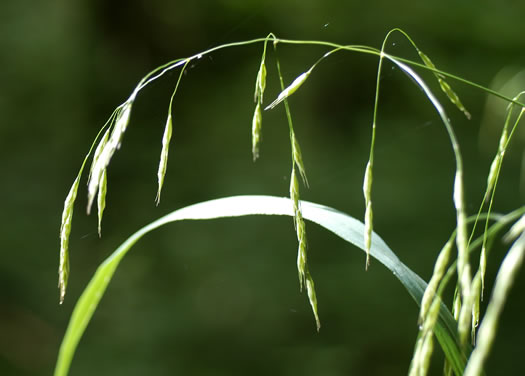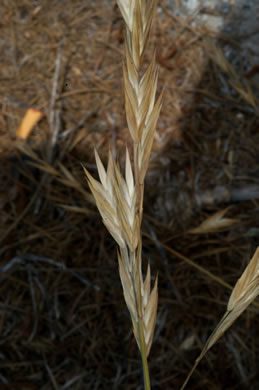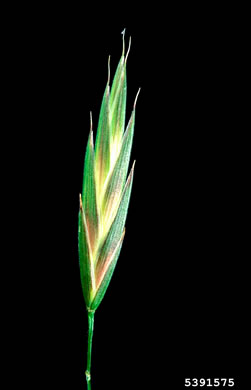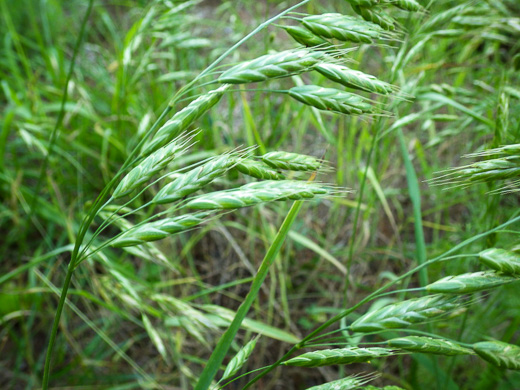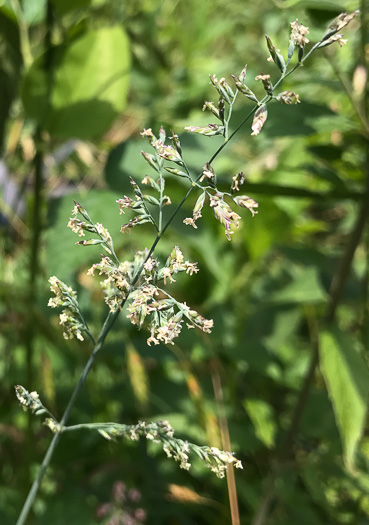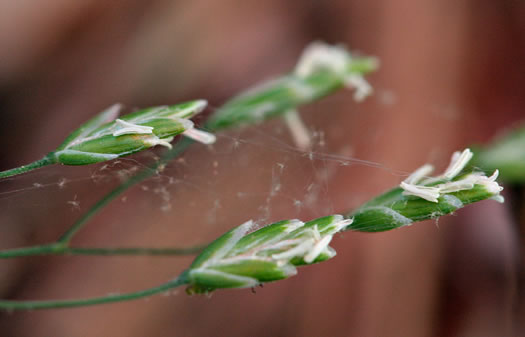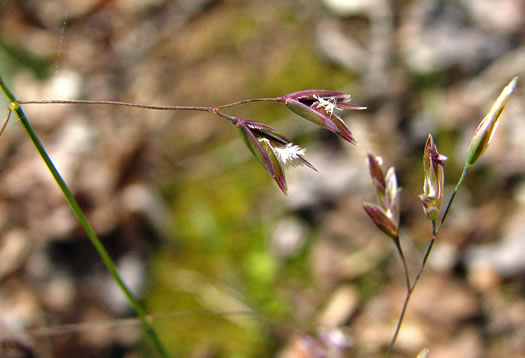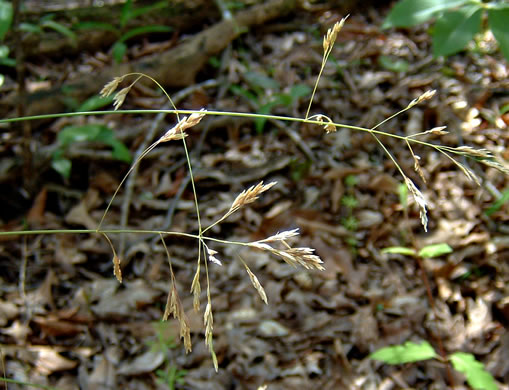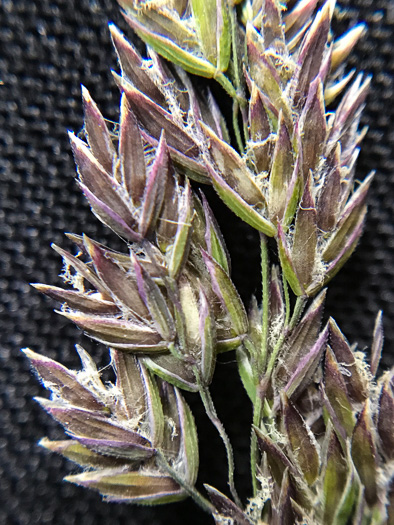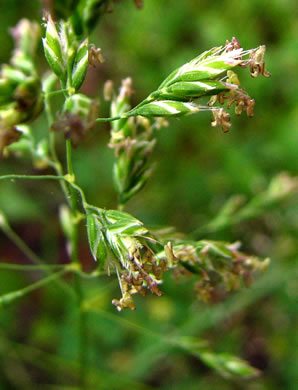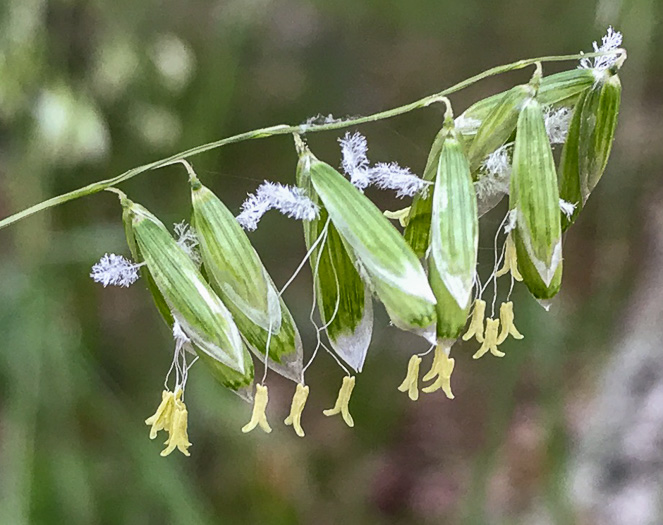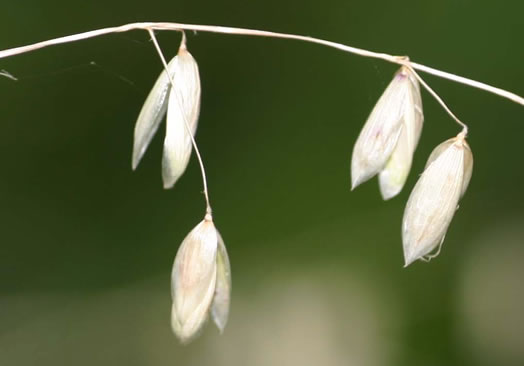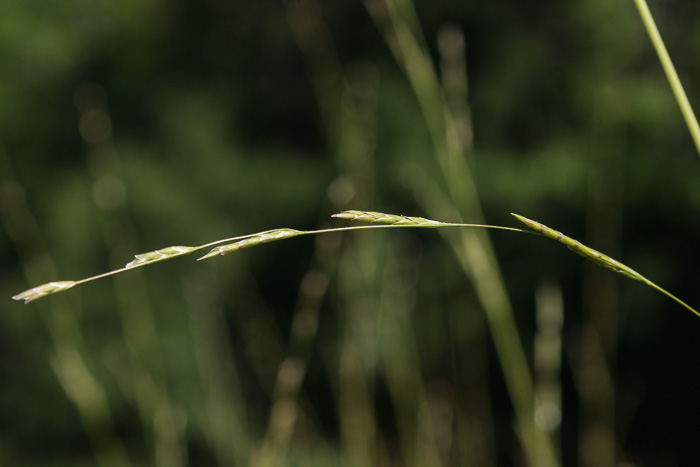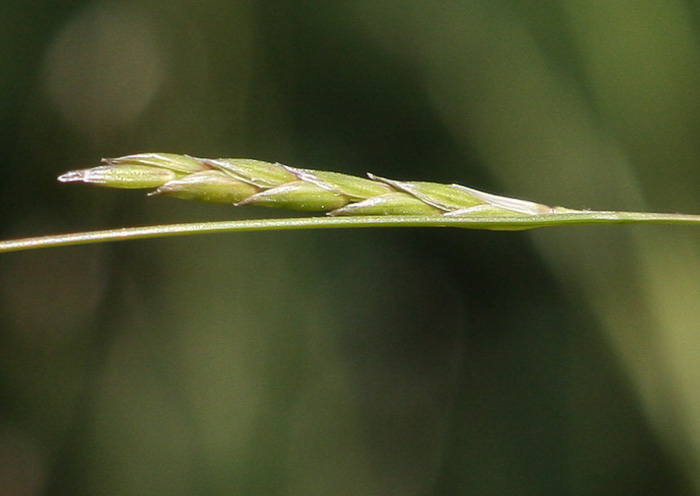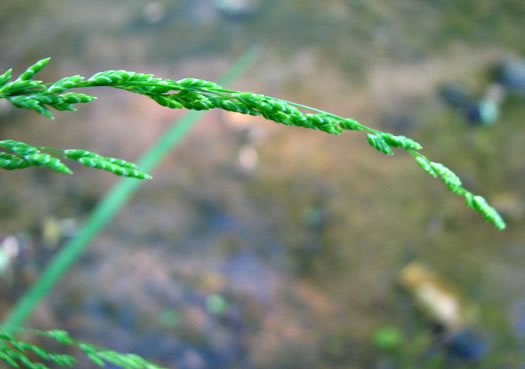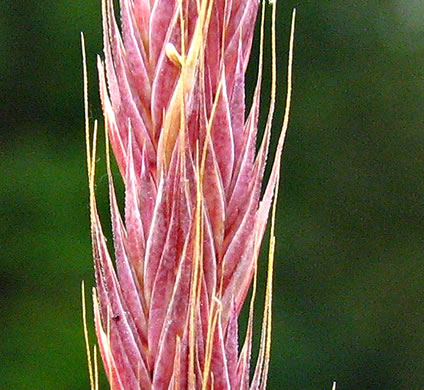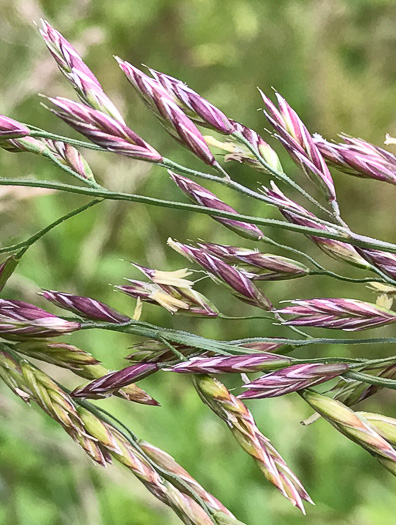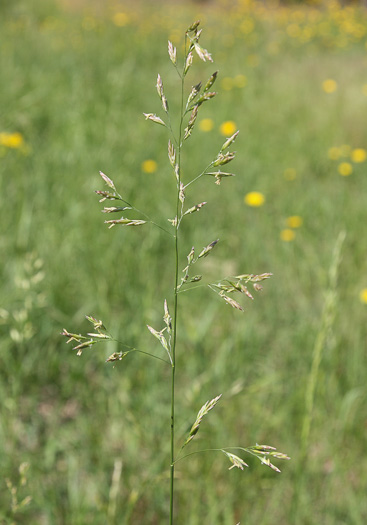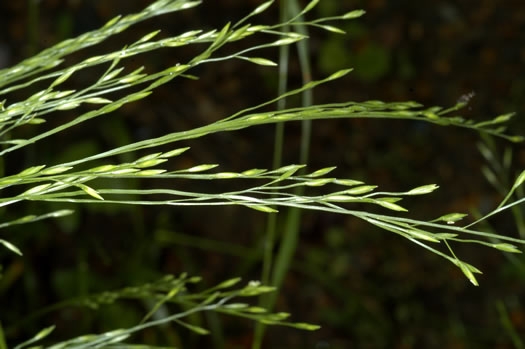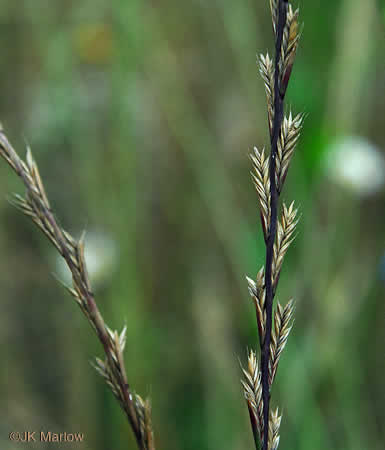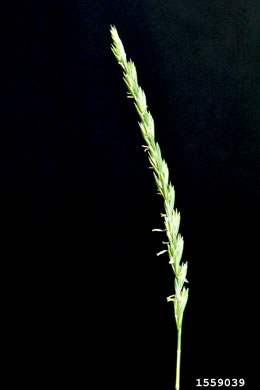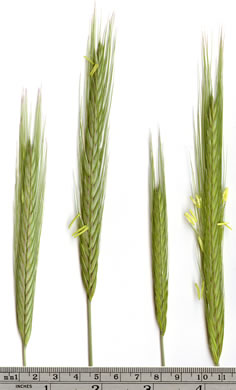Your search found 423 image(s) illustrating the term "spike." For a written explanation, click on "spike" in the Glossary.
PAGE 1 PAGE 2 PAGE 3 PAGE 4 PAGE 5 PAGE 6 PAGE 7 PAGE 8
To see larger pictures, click or hover over the thumbnails.
To go to the plant's detail page, click its name.
 Longstem Adder's-tongue,
Ophioglossum petiolatum
Longstem Adder's-tongue,
Ophioglossum petiolatum
Beadlike sporangia in a 1-4cm spike atop a 3-11cm stipe, per Field Guide to the Ferns and Other Pteridophytes of Georgia (Snyder & Bruce, 1986).
 Fraser Fir,
Abies fraseri
Fraser Fir,
Abies fraseri
After seed cones disintegrate, the spikelike upright central axis is left, per Woody Plants of the Southeastern US: A Winter Guide (Lance, 2004).
 Common Cattail,
Typha latifolia
Common Cattail,
Typha latifolia
Fuzzy, brown cylindric spikes (cattails) persist into winter, per Wildflowers of Tennessee, the Ohio Valley, and the Southern Appalachians (Horn, Cathcart, Hemmerly, & Duhl, 2005).
 Common Cattail,
Typha latifolia
Common Cattail,
Typha latifolia
Female flowers in brown cylindrical spike; male spike above and contiguous, per Atlantic Coastal Plain Wildflowers (Nelson, 2006).
 Narrowleaf Cattail,
Typha angustifolia
Narrowleaf Cattail,
Typha angustifolia
Its male and female flower spikes are separated by naked stem, per Atlantic Coastal Plain Wildflowers (Nelson, 2006).
 Common Snailseed Pondweed,
Potamogeton diversifolius
Common Snailseed Pondweed,
Potamogeton diversifolius
Fruiting spikes cylindric, 3-20mm long, 3-6mm broad; peduncles to 7cm long, per Vascular Flora of the Carolinas (Radford, Ahles, & Bell, 1968).
 Common Snailseed Pondweed,
Potamogeton diversifolius
Common Snailseed Pondweed,
Potamogeton diversifolius
Infl's unbranched; spikes dimorphic: submersed capitate & 2-3mm, emersed cylindric & 5-9.7mm, per Flora of North America.
 Pampasgrass,
Cortaderia selloana
Pampasgrass,
Cortaderia selloana
Spikelets 2-3 flowered, pistillate silky with long hairs, staminate naked, per Manual of the Grasses of the United States (Hitchcock & Chase, 1950).
 Carolina Triodia,
Tridens carolinianus
Carolina Triodia,
Tridens carolinianus
Spikelets short-pediceled, per Manual of the Grasses of the United States (Hitchcock & Chase, 1950).
 Carolina Triodia,
Tridens carolinianus
Carolina Triodia,
Tridens carolinianus
Panicle dense and spike-like, more than 4x as long as wide, per Weakley's Flora (2015).
 Longspike Tridens,
Tridens strictus
Longspike Tridens,
Tridens strictus
Panicle dense & spike-like, > 4x long as wide, branches ascending to appressed, per Weakley's Flora.
 Longspike Tridens,
Tridens strictus
Longspike Tridens,
Tridens strictus
Panicle dense, spikelike, somewhat interrupted below, narrowed above, per Manual of the Grasses of the United States (Hitchcock & Chase, 1950).
 Purpletop,
Tridens flavus
Purpletop,
Tridens flavus
Spikelets usually red or purple at maturity w 4-8 flowers in a herringbone, per Forest Plants of the Southeast and Their Wildlife Uses (Miller & Miller, 2005).
 Southern Sandgrass,
Triplasis americana
Southern Sandgrass,
Triplasis americana
Spikelets usually purplish. Lemmas deeply cleft, awn more than 5mm long, per Vascular Flora of the Carolinas (Radford, Ahles, & Bell, 1968).
 Purple Sandgrass,
Triplasis purpurea var. purpurea
Purple Sandgrass,
Triplasis purpurea var. purpurea
Spikelets usually purplish. Lemmas cleft, awns straight, 0.5-1.5mm long, per Vascular Flora of the Carolinas (Radford, Ahles, & Bell, 1968).
 Slender Woodoats,
Chasmanthium laxum
Slender Woodoats,
Chasmanthium laxum
Spikelets flat and nearly sessile, with 1-4 fertile and 1 sterile flower, per Vascular Flora of the Carolinas (Radford, Ahles, & Bell, 1968).
 Longleaf Woodoats,
Chasmanthium sessiliflorum var. sessiliflorum
Longleaf Woodoats,
Chasmanthium sessiliflorum var. sessiliflorum
Spikelets with 1-4 fertile and 1 sterile flower, per Vascular Flora of the Carolinas (Radford, Ahles, & Bell, 1968).
 Longleaf Woodoats,
Chasmanthium sessiliflorum var. sessiliflorum
Longleaf Woodoats,
Chasmanthium sessiliflorum var. sessiliflorum
Spikelets flat, subsessile, glumes and lemmas weakly nerved, per Vascular Flora of the Carolinas (Radford, Ahles, & Bell, 1968).
 River Oats,
Chasmanthium latifolium
River Oats,
Chasmanthium latifolium
Numerous flattened spikelets in an open, terminal, drooping panicle, per Wildflowers of Tennessee, the Ohio Valley, and the Southern Appalachians (Horn, Cathcart, Hemmerly, & Duhl, 2005).
 River Oats,
Chasmanthium latifolium
River Oats,
Chasmanthium latifolium
Drooping panicles of dangling spikelet clusters, in V-shaped pairs, per Forest Plants of the Southeast and Their Wildlife Uses (Miller & Miller, 2005).
 Sea Oats,
Uniola paniculata
Sea Oats,
Uniola paniculata
Flowers arranged in a showy drooping panicle w numerous flattened spikelets, per Atlantic Coastal Plain Wildflowers (Nelson, 2006).
 Sea Oats,
Uniola paniculata
Sea Oats,
Uniola paniculata
Spikelets conspicuously flattened, with 8-20 florets, per Wildflowers of the Eastern United States (Duncan & Duncan, 1999).
 gophertail lovegrass,
Eragrostis ciliaris var. ciliaris
gophertail lovegrass,
Eragrostis ciliaris var. ciliaris
Spikelets 6-12 flowered, 2-4mm long; keels of palea stiffly long-ciliate, per Manual of the Grasses of the United States (Hitchcock & Chase, 1950).
 Lace Lovegrass,
Eragrostis capillaris
Lace Lovegrass,
Eragrostis capillaris
Spikelets long-pediceled, 2-4 flowered, 2-3mm long, per Manual of the Grasses of the United States (Hitchcock & Chase, 1950).
 Lace Lovegrass,
Eragrostis capillaris
Lace Lovegrass,
Eragrostis capillaris
Spikelets (1.4)2-5mm long, ovate to lanceolate, lead-colored, occ reddish-purple, w 2-5(7) florets, per Flora of North America.
 Weeping Lovegrass,
Eragrostis curvula
Weeping Lovegrass,
Eragrostis curvula
Spikelets 7-11 flowered, 8-10mm long, gray-green, per Manual of the Grasses of the United States (Hitchcock & Chase, 1950).
 Purple Lovegrass,
Eragrostis spectabilis
Purple Lovegrass,
Eragrostis spectabilis
Spikelets usually purplish, 2-10 flowered, 1-6mm long. Pedicels rigid, per Vascular Flora of the Carolinas (Radford, Ahles, & Bell, 1968).
 Purple Lovegrass,
Eragrostis spectabilis
Purple Lovegrass,
Eragrostis spectabilis
Airy panicles of reddish-purple flower spikelets rise to a height of 1-2', per Gardening with the Native Plants of Tennessee (Hunter, 2002).
 Purple Lovegrass,
Eragrostis spectabilis
Purple Lovegrass,
Eragrostis spectabilis
Spikelets flattened clusters of 2-10 flowers in a herringbone arrangement, per Forest Plants of the Southeast and Their Wildlife Uses (Miller & Miller, 2005).
 Elliott's Lovegrass,
Eragrostis elliottii
Elliott's Lovegrass,
Eragrostis elliottii
Spikelets linear, mostly 8-15 flowered, 5-12mm; lemmas closely imbricate, per Manual of the Grasses of the United States (Hitchcock & Chase, 1950).
 Orchard Grass,
Dactylis glomerata
Orchard Grass,
Dactylis glomerata
Spikelets few-flowered, nearly sessile in dense 1-sided fascicles, per Manual of the Grasses of the United States (Hitchcock & Chase, 1950).
 Downy Brome,
Bromus tectorum
Downy Brome,
Bromus tectorum
Panicles generally nodding; spikelets drooping, each 2-3.5cm long, per www.invasive.org.
 Poverty Brome,
Bromus sterilis
Poverty Brome,
Bromus sterilis
Spikelets 2.5-3.5cm long, 6-10 flowered; lemma awn 2-3cm long, per Manual of the Grasses of the United States (Hitchcock & Chase, 1950).
 Hairy Woodland Brome,
Bromus pubescens
Hairy Woodland Brome,
Bromus pubescens
Pedicels ascending then later arching-drooping, mostly longer than spikelet, per Weakley's Flora (2020).
 Hairy Woodland Brome,
Bromus pubescens
Hairy Woodland Brome,
Bromus pubescens
Panicle open, branches usually spreading. Spikelets 6-9 flowered, per Vascular Flora of the Carolinas (Radford, Ahles, & Bell, 1968).
 Rescue Grass,
Bromus catharticus var. catharticus
Rescue Grass,
Bromus catharticus var. catharticus
Lemmas compressed & strongly keeled (entire spikelet thus laterally flattened), per Weakley's Flora.
 Rescue Grass,
Bromus catharticus var. catharticus
Rescue Grass,
Bromus catharticus var. catharticus
Spikelets light green, compressed, 4-9 flowered, per Vascular Flora of the Carolinas (Radford, Ahles, & Bell, 1968).
 Hairy Chess,
Bromus commutatus
Hairy Chess,
Bromus commutatus
Pedicels longer than the spikelets; lemma awns 5-12mm long, straight, per Weakley's Flora (2015).
 Field Brome,
Bromus arvensis
Field Brome,
Bromus arvensis
Resembling B. japonicus, spikelets thinner, flatter, often tinged w purple, per Manual of the Grasses of the United States (Hitchcock & Chase, 1950).
 Canada Bluegrass,
Poa compressa
Canada Bluegrass,
Poa compressa
Panicle branches usually short, in pairs, spikelet-bearing to the base, per Manual of the Grasses of the United States (Hitchcock & Chase, 1950).
 Canada Bluegrass,
Poa compressa
Canada Bluegrass,
Poa compressa
Scanty pubescence on the florets gives the spikelets a smooth appearance, per The Grasses of North Carolina (Blomquist, 1948).
 Autumn Bluegrass,
Poa autumnalis
Autumn Bluegrass,
Poa autumnalis
Spikelets 4-6 flowered, about 6mm long, per Manual of the Grasses of the United States (Hitchcock & Chase, 1950).
 early bluegrass,
Poa cuspidata
early bluegrass,
Poa cuspidata
Spikelets 3- or 4-flowered, per Manual of the Grasses of the United States (Hitchcock & Chase, 1950).
 early bluegrass,
Poa cuspidata
early bluegrass,
Poa cuspidata
Panicle branches mostly in pairs, distant, spreading, spikelets near ends, per Manual of the Grasses of the United States (Hitchcock & Chase, 1950).
 Kentucky Bluegrass,
Poa pratensis ssp. pratensis
Kentucky Bluegrass,
Poa pratensis ssp. pratensis
Spikelets crowded, lemmas copiously webbed at base, per Manual of the Grasses of the United States (Hitchcock & Chase, 1950).
 Kentucky Bluegrass,
Poa pratensis ssp. pratensis
Kentucky Bluegrass,
Poa pratensis ssp. pratensis
Spikelets 3-5 flowered, per Manual of the Grasses of the United States (Hitchcock & Chase, 1950).
 Two-flower Melicgrass,
Melica mutica
Two-flower Melicgrass,
Melica mutica
Each spikelet ordinarily contains 2 fertile florets, hence the common name, per Atlantic Coastal Plain Wildflowers (Nelson, 2006).
 Two-flower Melicgrass,
Melica mutica
Two-flower Melicgrass,
Melica mutica
Spikelets broad, pale, 7-10mm long, the florets spreading, pendulous, per Manual of the Grasses of the United States (Hitchcock & Chase, 1950).
 Eastern Mannagrass,
Glyceria septentrionalis
Eastern Mannagrass,
Glyceria septentrionalis
Spikelets terete or nearly so in cross-section, per Weakley's Flora (2015).
 Eastern Mannagrass,
Glyceria septentrionalis
Eastern Mannagrass,
Glyceria septentrionalis
Spikelets 1-2cm long, 6-12 flowered, the florets rather loosely imbricate, per Manual of the Grasses of the United States (Hitchcock & Chase, 1950).
 Fowl Mannagrass,
Glyceria striata var. striata
Fowl Mannagrass,
Glyceria striata var. striata
Spikelets somewhat crowded toward the ends of branchlets, per Manual of the Grasses of the United States (Hitchcock & Chase, 1950).
 Southern Six-weeks Fescue,
Festuca octoflora var. octoflora
Southern Six-weeks Fescue,
Festuca octoflora var. octoflora
Lemma awns 0.3-6(9)mm long; spikelets w 5-11(-more) closely imbricate florets, per Weakley's Flora.
 Tall Fescue,
Lolium arundinaceum
Tall Fescue,
Lolium arundinaceum
Spikelets have 3-6 florets and lack awns. L. pratense is very similar, per Vascular Plants of North Carolina.
 Tall Fescue,
Lolium arundinaceum
Tall Fescue,
Lolium arundinaceum
Spikelets 10-25mm long, ellipsoid with a pointed tip, short stalked, per Forest Plants of the Southeast and Their Wildlife Uses (Miller & Miller, 2005).
 Meadow Fescue,
Lolium pratense
Meadow Fescue,
Lolium pratense
Panicle erect, or summit nodding, branches spikelet-bearing nearly to base, per Manual of the Grasses of the United States (Hitchcock & Chase, 1950).
 Nodding Fescue,
Festuca subverticillata
Nodding Fescue,
Festuca subverticillata
Panicle nodding, loose, open; branches spreading, spikelets toward the ends, per Manual of the Grasses of the United States (Hitchcock & Chase, 1950).
 Italian Ryegrass,
Lolium multiflorum
Italian Ryegrass,
Lolium multiflorum
Florets 11-22 per spikelet, per Weakley's Flora.
 Quackgrass,
Elymus repens
Quackgrass,
Elymus repens
Spike 5-15cm long; spikelets mostly 4-6 flowered, 1-1.5cm long, per Manual of the Grasses of the United States (Hitchcock & Chase, 1950).
 Bread Wheat,
Triticum aestivum
Bread Wheat,
Triticum aestivum
Spike 5-15cm long. Spikelets alternate on opposite sides of rachis, per Vascular Flora of the Carolinas (Radford, Ahles, & Bell, 1968).
 Cereal Rye,
Secale cereale
Cereal Rye,
Secale cereale
Spike 6-15cm long including awns, 12-15mm broad, per Vascular Flora of the Carolinas (Radford, Ahles, & Bell, 1968).

